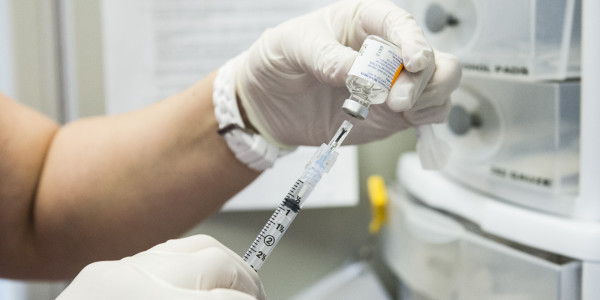In January 2015, Disneyland in Southern California got a jolt to its “happiest place in the world” reputation. An outbreak of measles was reported, and with thousands of visitors practically rubbing elbows every day at the theme park, officials feared the disease could only spread. They were right.
The initial outbreak totaled 51 cases, but measles reports have spread beyond Disneyland into other states, including Arizona, Colorado, Nebraska, Oregon, Utah, and Washington, as well as cases reported in Mexico. The outbreak in Arizona exposed some 200 children to the disease at a Phoenix area medical center. There was also fear of more exposure as thousands of people headed to Arizona for the Super Bowl, played on February 1.

Many medical officials blame the outbreak on the fact that so many of the involved people refused measles vaccinations for themselves and their children.
Measles is a disease that causes red, watery eyes, a rash, and fever. It was first identified by a Persian doctor in the ninth century. It became so widespread that by the mid-nineteenth century, nearly all children in the United States got the disease by the time they were 15. About four million Americans were infected each year, with about 400 deaths as a result.
That figure changed drastically beginning in 1963 when a measles vaccine became available, and by 1981, the reported number of cases was 80% lower than the year before. The disease was not eliminated, however, and an outbreak occurred among vaccinated school-aged children in 1989. That prompted the American Academy of Pediatrics (AAP) and the American Academy of Family Physicians (AAFP) to call for a second dose of the vaccine.
That action plus improvements to the vaccine itself brought about a further decline in the number of cases. By the year 2000, measles was declared eliminated in the U.S.
However, not everyone agreed, and they still don’t. Disneyland is located in Orange County, which had the highest measles rate in the state for the year 2014. It also had California’s highest number of non-vaccinated children, including some in the initial outbreak at Disneyland.
Why? With such a low report of measles cases among those vaccinated, why wouldn’t people get the vaccine or – as if often the case – why would they refuse to have their children vaccinated? Reportedly, there is a less than one in a million chance of a bad reaction from the vaccine. However, according to Orange County pediatrician Bob Spears: “Parents just don’t fear the disease anymore and parents don’t want their child to have a bad side effect.”
The conflict about the measles vaccine is mainly centered in California’s large, middle income and affluent parents of school-aged children, many of whom feel they are being told to accept the worth of the vaccine only on trust. They have become a community of doubters. Many of them voice the opinion that doctors as well as the pharmaceutical industry are not forthcoming about the risks of exposing their children to the dangers of a measles vaccine.
Siding with them are people in the so-called political left who voice their suspicion about the power of the pharmaceutical industry in general. The debate goes on.
Mark Sadaka is a vaccine injury lawyer who represents numerous clients from around the country. Sadaka’s firm has the resources and expertise necessary to successfully handle these medically complex cases. Go to Vaccine Injury Help Center if you have vaccine injury related concerns.
